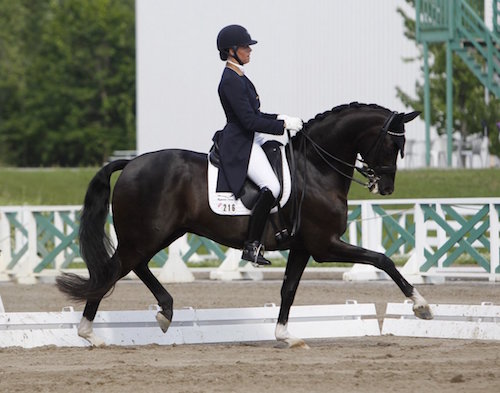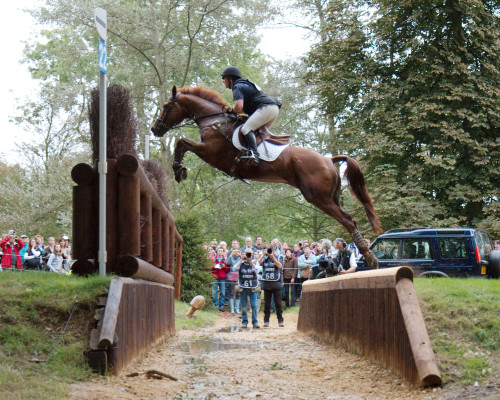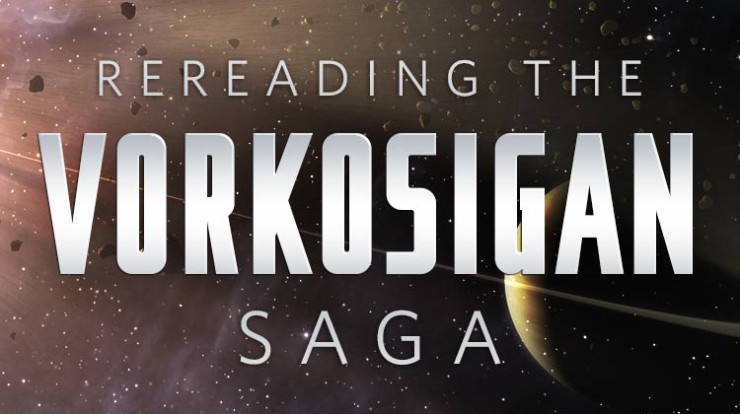Count Piotr Vorkosigan is not of this Earth. He has spent his life fighting the Cetagandans and the warring Counts on a planet with toxic vegetation over a thousand years in our future. But he still mounts his horse from the left, just like Xenophon told him to.
Horses don’t fit smoothly into most space operas, and encounters with them aren’t an everyday—or even an every book—occurrence in the Vorkosigan Saga. While they aren’t usually at the center of Bujold’s stories, horses play key roles in pivotal moments. Barrayarans love their horses like they love their fireworks, and Bujold clearly loves them too.
The first horse to appear in the Vorkosigan series is a Quarter Horse colt that Piotr imports as a frozen embryo in Barrayar. The colt hints at a rich equestrian history on Barrayar. I think it unlikely that horses were among the very first arrivals on the colony when Barrayar was first settled. Horses are potentially valuable contributors to the project of terraforming a planet, but only if you can feed them, and horses don’t eat native Barrayaran vegetation. Interplanetary importation of hay and grain for fodder would have been a major logistical challenge. I think the easiest approach would be to have terraforming well underway before the horses arrived. And then how? Freezing embryos seems like a practical method of transporting horses between planets—as a species, they are notoriously finicky about travel. But this method relies on an available mare to act as gestational surrogate. I imagine that the process of importing horses to the new colony was expensive and difficult, but early Barrayarans must have devoted themselves to the project. Barrayar had horses during the Time of Isolation—the counts rode around their districts on them. Barrayar’s military was accomplished in using cavalry by the time they fought the Cetagandans.
So what is Piotr doing with a Quarter Horse? I imagine he’s using it to improve his trail horse lines. Piotr evidently takes this project very seriously—he has four well-conditioned trail horses available on minimal notice when Vordarian stages his coup. That’s four horses not only on the ground, but trained and conditioned for an arduous trek into the Barrayaran mountains, in addition to a substantial herd that can be dispersed to confuse Vordarian’s troops. Cordelia’s mare, Rose, is the unsung hero of Gregor’s flight to safety. Her patient tolerance for being led through difficult terrain under a completely inexperienced rider is a testament to the sweetness of her nature. It also demonstrates the success of Piotr’s breeding program—the combination of sanity, reliability, and athleticism is hard to come by. There is no way this journey could possibly be comfortable for a woman recovering from a traumatic c-section and struggling with emotional shock, but there are many ways it could have been worse.

Piotr is a deeply flawed individual—his attempts to kill Miles in the replicator make that clear—and horses are key to uncovering the better angels of his nature. Miles proves this at age five, when he falls off his grandfather’s hottest dressage prospect and notes that “it moves the springiest.” Dressage is the art of training and riding a horse in a manner that develops obedience, flexibility, and balance. It’s incredibly difficult for both horse and rider. Piotr’s offer to start Miles’s riding lessons on a lunge line—the way the Spanish Riding School in Vienna has started riders since the 18th century—reveals his deep roots in the sport, as well as his commitment to being a nuisance to Miles’s mother. Piotr’s ownership of a hot dressage prospect has implications for more than his relationship with his grandson. Piotr has the means to purchase a fully-trained, highly competitive dressage mount. Having a prospect reveals that Piotr does not merely ride. He’s participating in a network of Barrayaran owners, trainers, and riders enthusiastically pursuing perfection in a sport that is notoriously obscure, subjective, and stultifyingly boring for the layperson to watch.
It’s difficult for me to imagine, though, that the passions of Barrayaran’s equestrians lie in dressage alone. The hallmarks of Barrayaran culture are its affection for militarism, suicidal tests of bravery, and recreational drinking. Obviously, they must be enthusiastic eventers. Three-day eventing has its historical roots in the tests required of horse cavalry. Dressage makes up the first phase of competition. The second, and ridiculously dangerous, phase is cross-country riding, in which horse and rider negotiate a series of large, solid obstacles (including ditches, hills, and water) as fast as they can. The third phase is show jumping in an arena, as a test of speed and agility. This is safer than cross-country because the jumps fall down if a horse runs into them. The fourth, unofficial, phase is partying. While I acknowledge the complete lack of textual evidence, I’m convinced that Barrayarans are at least as devoted to eventing as they are to boot polo.

The outcome of Miles’s early lessons is revealed with the introduction of Fat Ninny in “Mountains of Mourning.” Fat Ninny was born on the Vorkosigan estate, and Miles trained him with Piotr’s help—which suggests a high level of skill for a hobbyist. Horses aren’t only a symbol of conspicuous consumption for the Barrayar’s elite—they’re the only means of transport in rural areas. Fat Ninny is special. His stabbing and subsequent medical treatment demonstrate the yawning class divide that threatens backcountry Barrayarans. But most of Barrayar’s horses show up in lighter moments. Occasionally, this has an impact on infrastructure; There’s a monthly distribution of manure from the Imperial Stables. Most of the Vorkosigan Saga’s horsey moments are more directly romantic. Gregor’s lunch date with Laisa in Memory is my favorite example. The horse is carefully chosen; gentle, gleaming, and Miles notes, probably drugged. Laisa is charmed. Gregor is suave, adorable, and obviously smitten.
Miles and Ekaterin have their own thwarted equestrian moment when she finds him in the attics of Vorkosigan House in A Civil Campaign. He has found his grandmother’s saddle, and they reminisce about their childhood experiences with horses. Miles doesn’t know why his mother never took to riding, and refers to Piotr as “keeping the tradition alive” by teaching him. He doesn’t appear to know that the tradition in question was a vital aspect of Piotr’s military planning. Ekaterin’s aunt kept a pony for her, and for the manure for her garden—“Saddles were a bit optional.” This experience sounds much more casual than Miles’s, but Ekaterin probably rides quite well. Their star-crossed state keeps them from pursuing Miles’s dream of a pleasant hack on Vorbarr Sultana’s bridle paths, but once they have six children I’m sure they find a way to keep the tradition alive.
Ellen Cheeseman-Meyer teaches history and reads a lot.










